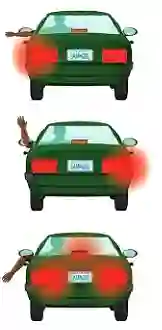- Need Any Help: +1 647-760-5505 or
- info@trubicars.ca

Navigating the roads of Nova Scotia can be an exciting experience, whether you’re a resident or a visitor. But to ensure a safe and smooth journey, it’s crucial to understand the various road signs and signals that guide you along the way. In this Trubicars guide, we’ll take you through the essential road signs and signals in Nova Scotia, helping you become a more confident and responsible driver.
Regulatory signs are the most common type of road signs in Nova Scotia. They come in various shapes, colors, and designs and convey important rules and regulations that drivers must follow. Here are some key regulatory signs:
Warning signs are designed to alert drivers to potential hazards ahead. These signs are often yellow with black symbols or text. Some common warning signs include:
Information signs provide valuable information about services, facilities, and nearby attractions. These signs are typically blue or green with white text or symbols. Some examples include:
Temporary signs are often used in construction zones or during special events. These signs may have orange backgrounds with black text or symbols. They inform drivers about temporary conditions, detours, or lane closures.
Traffic signals are a crucial part of road safety. Red means stop, yellow indicates caution, and green means go. Familiarize yourself with the meaning of each signal and always obey them to avoid accidents.
Understanding Nova Scotia’s road signs and signals is essential for safe and responsible driving. Whether you’re a new driver or simply brushing up on your knowledge, knowing these signs will help you navigate the province’s roads confidently. Always remember to drive attentively, follow the rules, and respect the signals to ensure a safe and enjoyable journey for yourself and others on the road. Stay informed, stay safe, and happy driving!

 January 10, 2025 by
January 10, 2025 by Trubicars
Trubicars
 January 10, 2025 by
January 10, 2025 by Trubicars
Trubicars
 January 3, 2025 by
January 3, 2025 by Trubicars
Trubicars
Once you acquire the knowledge provided in
those tests, you are ready to pass the test,
for the first time.
